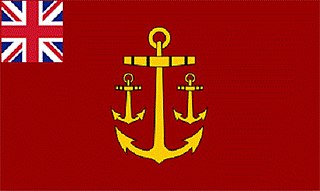These are lists of territorial governors by century and by year, such as the administrators of colonies, protectorates, or other dependencies. Where applicable, native rulers are also listed.

Admiral John Holloway was an officer of the Royal Navy who saw service during the American War of Independence, and the French Revolutionary and Napoleonic Wars, before serving as Governor of Newfoundland between 1807 and 1809.

Mette Marie Astrup was a Danish actress, one of the best known of her time in Denmark. She enjoyed a career totaling fifty years at the Royal Danish Theatre in Copenhagen.
Edward Cooke was a British politician and pamphleteer.

General Sir David Dundas was a British Army officer who fought in the Seven Years' War and French Revolutionary Wars, wrote important texts on the Principles of Military Movements and then served as Commander-in-Chief of the Forces from 1809 to 1811.

Formally known as "His Majesty's Council of Nova Scotia", the Nova Scotia Council (1720–1838) was the original British administrative, legislative and judicial body in Nova Scotia. The Nova Scotia Council was also known as the Annapolis Council and the Halifax Council. After 1749, when the judicial courts were established, the Nova Scotia Council was limited to administrative and legislative powers.

The Glorious Revolution of 1688 rearranged the political map of Europe, and led to a series of wars with France that lasted well over a century. This was the classic age of sail; while the ships themselves evolved in only minor ways, technique and tactics were honed to a high degree, and the battles of the Napoleonic Wars entailed feats that would have been impossible for the fleets of the 17th century. Because of parliamentary opposition, James II fled the country. The landing of William III and the Glorious Revolution itself was a gigantic effort involving 100 warships and 400 transports carrying 11,000 infantry and 4,000 horses. It was not opposed by the English or Scottish fleets.

The Naval Works Department was the department of the Inspector-General of Naval Works, Brigadier-General Sir Samuel Bentham, who in 1796 had been given responsibility for modernising and mechanising the Royal Navy dockyards. The Department was established under the direct authority of the Board of Admiralty on 25 March 1796. In 1808 Bentham's job title was changed to Civil Architect and Engineer of the Navy, and he and his department were placed under the oversight of the Navy Board. In 1812 Bentham was dismissed and the department dissolved; most of its responsibilities were taken over by a new Department of the Surveyor of Buildings.

The Navy Office was the government office responsible for the civil administration of the British Royal Navy from 1576 to 1832. It contained all the members of the Navy Board and various other departments and offices. The day-to-day business of the Navy Office was headed by the Clerk of the Acts from 1660 until 1796. When this position was abolished duties were assumed by separate committees for Accounts, Correspondence, Stores, Transports and Victualling presided over by the Comptroller of the Navy. The Navy Office was one of two government offices that were jointly responsible for directing naval affairs. In 1832 following reforms of the naval service the Navy Office was abolished and its functions and staff taken over by the Admiralty.

The Marine Pay Department was formed in 1755, and replaced the earlier Marine Pay Office that was established in 1702. It was responsible for processing marines' pay to the Royal Marine Divisions located at Chatham, Portsmouth, Plymouth and Woolwich. The department was initially administered by the Paymaster of the Marines whose title later changed to the Paymaster and Inspector General of Marines. In 1809 it absorbed the secretariat duties of the Marine Department. The department existed until 1831 as part of the Royal Marine Office when it was abolished and its duties transferred to the Navy Pay Office.
This page is based on this
Wikipedia article Text is available under the
CC BY-SA 4.0 license; additional terms may apply.
Images, videos and audio are available under their respective licenses.








